An Abandoned Hotel
Walking through the lower Albaicin, historic quarter in Granada you can see fabulous views across to the Alhambra. Carrera del Darro is often referred to as the prettiest street in the world. Next to the river, this cobbled street is directly below the Red Castle on the hill.
You may have noticed an abandoned building on the end of the street beside the river. The Carrera del Darro changes it name someway along to Paseo Padre Manjon. Officially named this way but known by locals as Paseo de los Tristes. (Walkway for the Sad) It got this name as grieving relatives would walk along this street to a nearby cemetery.
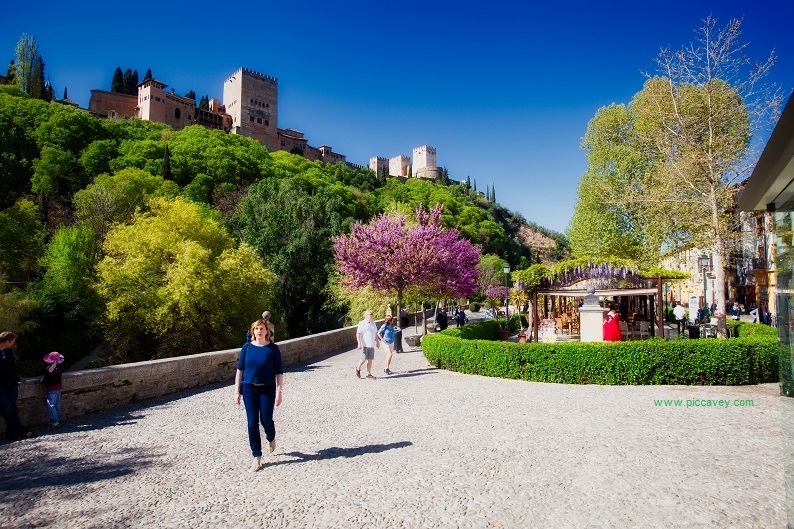
Paseo de los Tristes
Along this part of the street many stop to notice the abandoned building known as Casa de los Espejos. (House of the Mirrors) It´s also referred to as Carmen de Santa Engracia, Carmen del Granadillo or even by locals as Hotel Reuma !
Another name given by locals is the Casa de la Maleta. The Suitcase House. As it looks like a little suitcase when you see it from a distance. Some call it the dolls house. It seems to be small, dwarfed by the perspective when you see it from the Albaicin.
(seen on this photo below on the right)
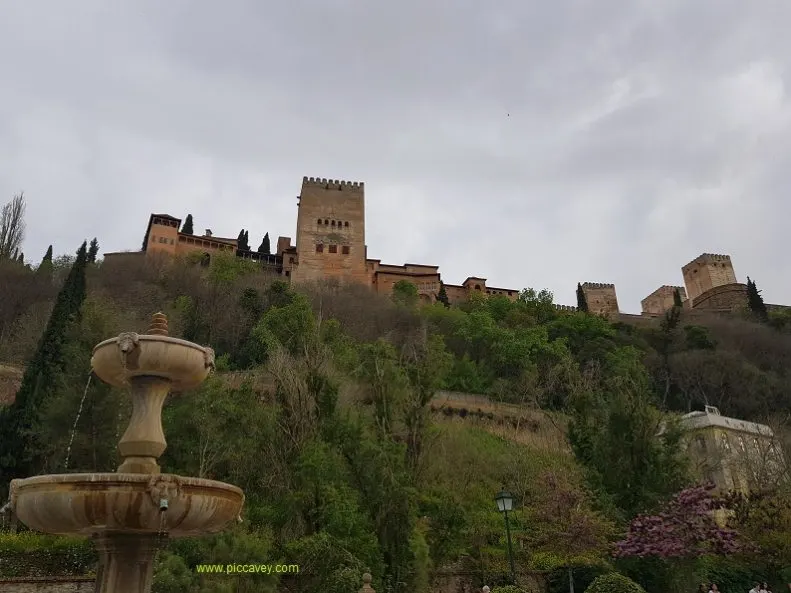
Casa de la Maleta
Many locals and visitors question how this building can be abandoned and in a state of disrepair when it occupies such a wonderful location in Granada. Directly below the Alhambra Palace itself.
I wanted to find out more about this mysterious building so I begin investigating.
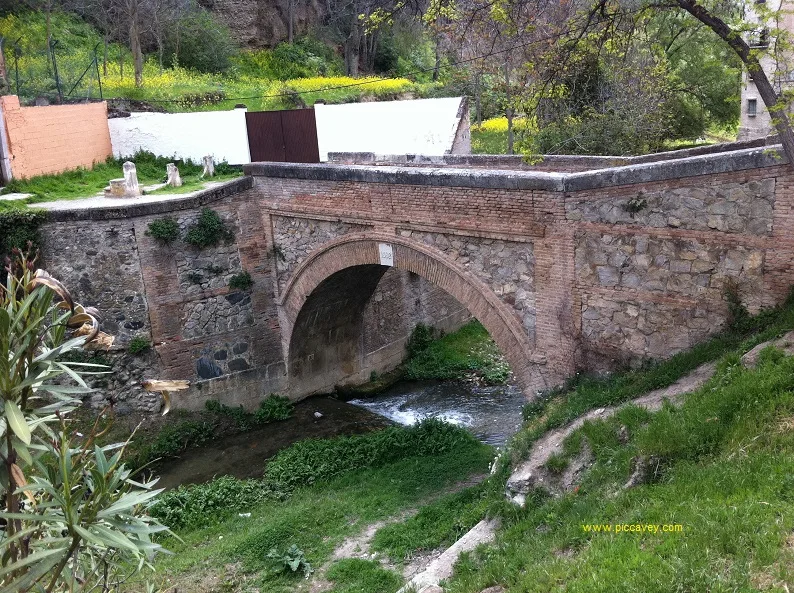
First we´ll deal with all those names!
The estate was originally Carmen de Santa Engracia. On one side there was another property called Carmen el Granadillo which made up part of it. These were separated and owned seperately. The area has almonds trees, fruit trees, land as well as the Hotel Building which grabbed my attention.
Carmen houses are typical in Granada, especially around the Albaicin neighbourhood. Find more about them here: Typical Carmens in Granada
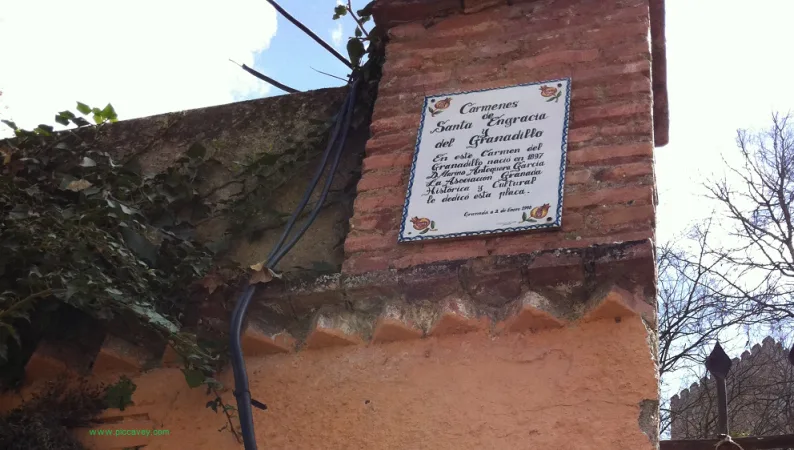
Hotel Bosque de la Alhambra
This elegant building on the bank of the Darro River was built in 1908 just below the Comares Tower. It opened on the 20th May 1910. The name of the Hotel at the time of opening was the Alhambra Woods Hotel. In Spanish Hotel Bosque de La Alhambra.
Designed as a luxury hotel and described by the first visitors in the opening week as a ´Delightful Mansion´. It was a time in which the city was attracting it´s first tourists. In the same year the Hotel Alhambra Palace was opened too.
Many visitors were looking forward to visiting the Alhambra Woods Hotel for the first time for the Corpus Christi festival in June that year. To get to the hotel entrance you accessed it by crossing the Chirimias bridge. (seen above)
The hotel was well received initially, but not long after its opening months the guests began to leave. Nicknamed by the locals as the Flu hotel. (Hotel Reuma) this name is still used even today. The damp problems in the guests rooms, the chilliness from the river and the dark shade of woods didn´t suit the guests at all. It is understood that 1912 it stopped operating as a hotel. Just two years after its inauguration. The hotel closed defintively in 1916 although details are sketchy. The hotel was owned by D.Manuel Antonio Reyes Clavero a Building Surveyor whose wife had owned the land.
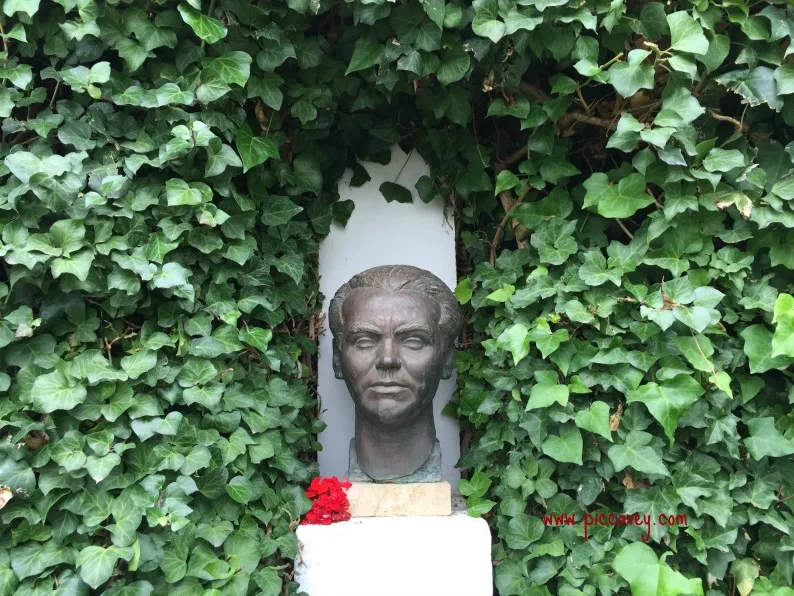
Carmen de Santa Engracia
Since the closure of the Hotel Bosque de la Alhambra the building has been used for different purposes. It´s said that the Composer Manuel de Falla was living on the estate of Carmen de Santa Engracia during the summer of 1921. During this time he was often visited by Granada poet Federico Garcia Lorca.
During the war in 1936 the building was used as a Hospital for the city.
Later in 1940 it was used as a base for a Masonic Lodge, named Alhambra. At the time there were three masonic groups in the city, Federico Garcia Lorca is rumored to have been a member. It was even used as dressing rooms for theatre performers and artists at one point.
Then around the years 1950 to 1960 it has been documented that part of the building it was used as a factory for making ropes from cannabis plants. It was also known to have housed a soap factory too.
Up until the year 2000 the building was in a state of abandon, that year it was taken over by the Alhambra management comittee and now destined to be used as a centre related to the monument.
The recent plans drawn up by the Granada council and the Andalucian local government promise to improve the general aspect of the area and recover the bridge of Chirimías, so that it regains it´s original appearance, as well as renovating the building in order to offer cultural activities related to the Alhambra Palace and offer temporary or permanent exhibitions.

Please Note:
This post contains affiliate links, which means that if you click through and make a purchase, I will receive a small commission. All thoughts, feelings and opinions shared on this blog and in this post are my own.
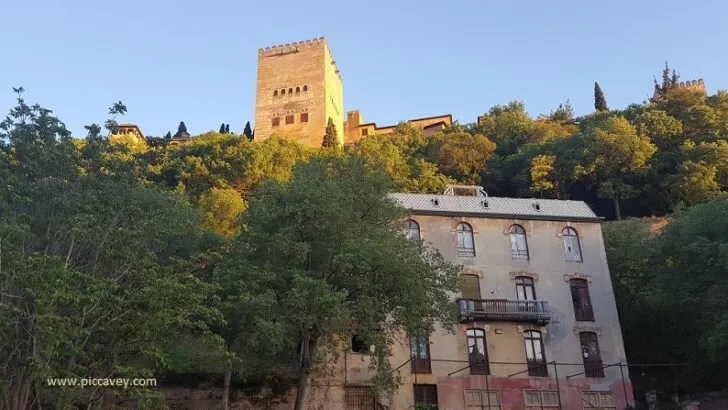
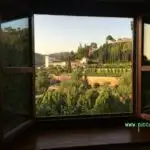
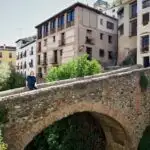
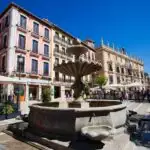
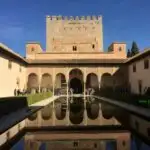
Thank you for the information on this interesting building, have been going to Granada for many years and have always wondered about its history and why it ended up abandoned.
I have crossed the bridge many times to try a peek inside.
One of the best guide books to the Alhambra and Generalife is the Official Guide book to the already mentioned.
it contains so much information on the Alhambra etc. It costs 15 euros but I was fortunate to win a copy in a draw run by the Alhambra association together with four other books about other subjects on the Alhambra etc.+
I read the books often especially the official guide book as it contains so much information on the Alhambra and the Generalife it is a bulky book but as a souvenir I would recommend it well worth reading as I do.
Thanks Molly we have always wondered about this building.
You information is so valuable on everything about Granada,
John and Greta.
Thanks so much for reading Greta!
hi!
I would like to ask u if you have any info about the oficios street in the City. I´m actually trying to make an investigation about a building situated in that set, known as Cetro Jose Guerrero, and i´m getting carazy, i can´t find anything about the history of the building above 1890…
Maybe u know something else…
I aprecciate
Hi
The Centro José Guerrero is located opposite the Sagrario Chapel on Calle Oficios. The history of this builing is quite clear from 1892 up until the present day.
Before that time it is difficult to find information.
The street used to be called Calle Mesa Redonda (before it was Calle Oficios) and the small street off there is Calle Tinte.
Around 1895 the Sugar boom affected the area as large Grand houses were built and many buildings (some with historic worth) were demolished.
The Alcaiceria was basically the Muslim quarter (Morería) dedicated to Silk Exchange and later to general commerce.
There were two Mosques and a Chapel (Ermita) in this area, none of which remain today. (but were there in 1600s)
I hope some of this information helps
Molly
Very interesting , good job and thanks for sharing such a good information about a mysterious hotel. This is such a useful post.
I’ve been calling this the “Wes Anderson-y House”, it’s good to know some of the history!
Yes I would love it to have become a hotel again.. such a perfect location
Great! I only ever knew the Hotel Reuma name and didn’t even make the flu connection. I’d buy it!*
*if it was on the market and I had any money.
I’m sure at the right price they’d sell ; ) such a shame this isn’t a boutique character hotel or home…
Just been told by a Local friend that some people call this Casa de la Maleta (house of the suitcase) as it looks like it has a little handle on the top to pick it up ; )
I´ve seen this place and wondered what it was. Thanks for the insight, Molly 🙂
[…] The majority of Carmens are private residences and cannot be seen by the general public. An example is the Carmen de la Media Luna on the Cuesta de San Gregorio in the Albaizin area. Also the Carmen de SantaEngracia was a private Carmen home next to the river Darro and below the Alhambra palace, it is in an abandoned state, bought in 2000 by the Alhambra Patronato organisation, this will be reconditioned as a visitors centre. Read my post related to this here: Carmen de Santa Engracia – Hotel below the Alhambra […]